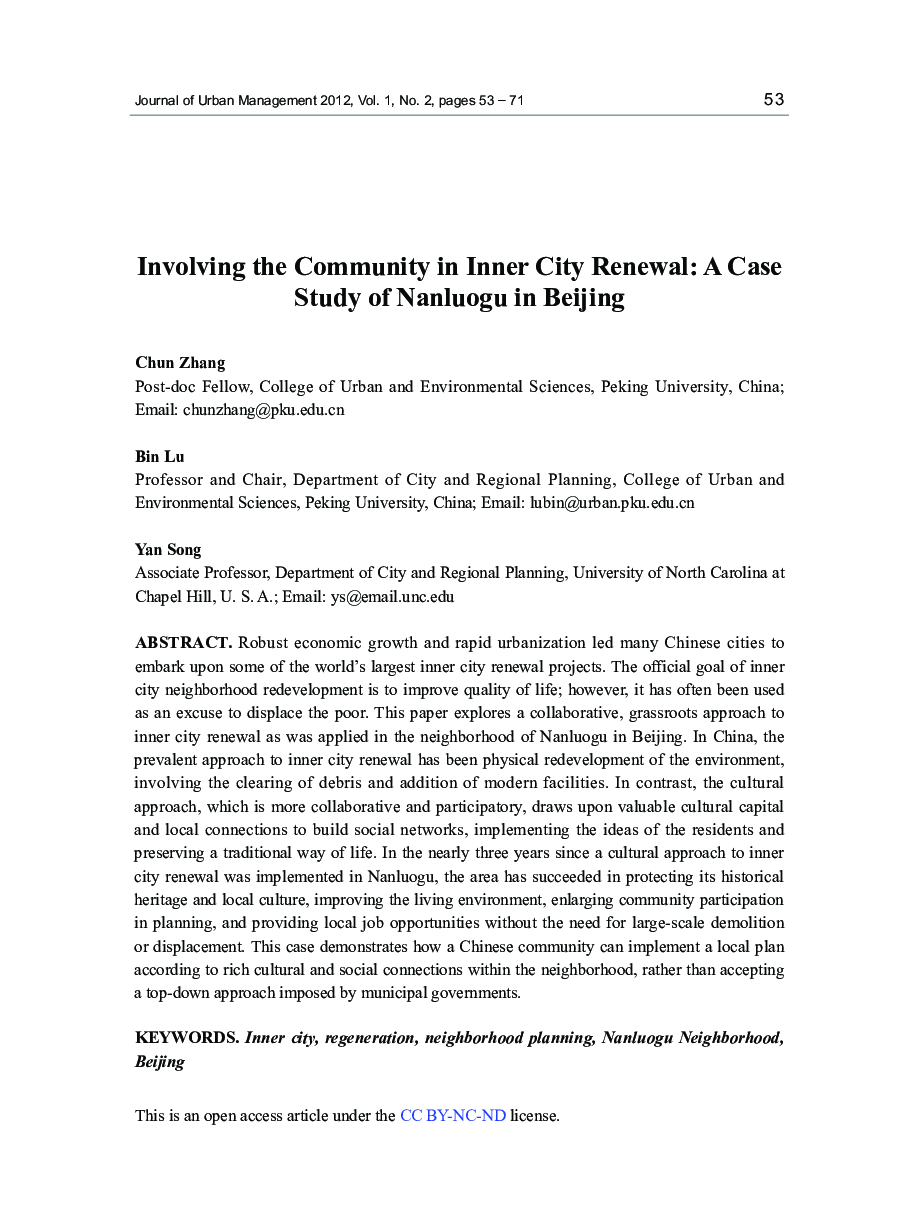| Article ID | Journal | Published Year | Pages | File Type |
|---|---|---|---|---|
| 7487478 | Journal of Urban Management | 2012 | 19 Pages |
Abstract
Robust economic growth and rapid urbanization led many Chinese cities to embark upon some of the world's largest inner city renewal projects. The official goal of inner city neighborhood redevelopment is to improve quality of life; however, it has often been used as an excuse to displace the poor. This paper explores a collaborative, grassroots approach to inner city renewal as was applied in the neighborhood of Nanluogu in Beijing. In China, the prevalent approach to inner city renewal has been physical redevelopment of the environment, involving the clearing of debris and addition of modern facilities. In contrast, the cultural approach, which is more collaborative and participatory, draws upon valuable cultural capital and local connections to build social networks, implementing the ideas of the residents and preserving a traditional way of life. In the nearly three years since a cultural approach to inner city renewal was implemented in Nanluogu, the area has succeeded in protecting its historical heritage and local culture, improving the living environment, enlarging community participation in planning, and providing local job opportunities without the need for large-scale demolition or displacement. This case demonstrates how a Chinese community can implement a local plan according to rich cultural and social connections within the neighborhood, rather than accepting a top-down approach imposed by municipal governments.
Related Topics
Social Sciences and Humanities
Social Sciences
Geography, Planning and Development
Authors
Chun Zhang, Bin Lu, Yan Song,
